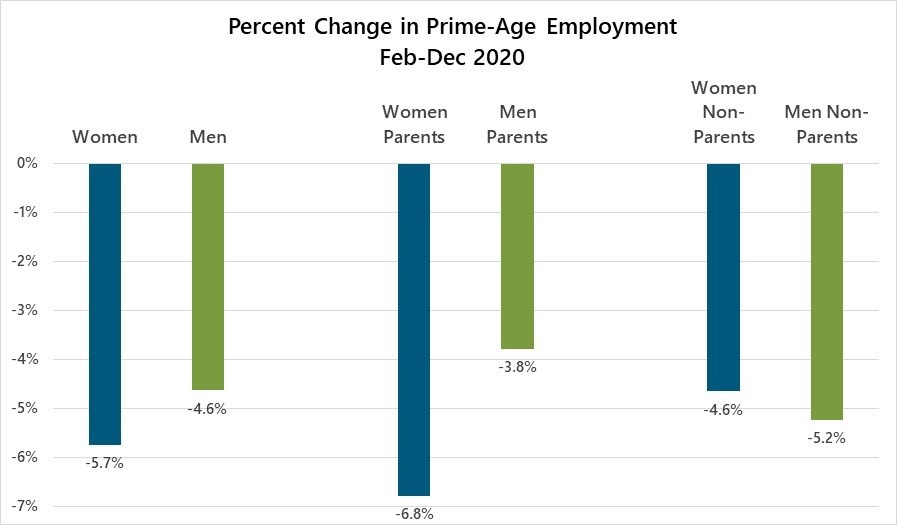
China’s Success in Alleviating Absolute Poverty

Introduction
China has made remarkable progress in alleviating absolute poverty over the past four decades. The country has lifted more than 800 million people out of extreme poverty, accounting for about 75 percent of global poverty reduction between 1981 and 2020. This achievement aligns with the United Nations’ 2030 Agenda for Sustainable Development, specifically the goal of eradicating poverty.
Factors Driving China’s Success
- Agricultural Development
- Urbanization
- Industrialization
Agricultural development played a crucial role in China’s early poverty reduction efforts. The country’s economic reforms significantly improved agricultural labor productivity, facilitating the transition of labor from agriculture to higher productivity manufacturing and service sectors. This diversification of income sources for households in rural areas has contributed to poverty reduction.
China’s rapid economic growth has been accompanied by substantial urbanization. The increase in urban population and the availability of higher-paying jobs for migrant workers have directly contributed to poverty reduction. Additionally, urbanization indirectly alleviated poverty in rural areas by providing better-paying jobs for migrant workers and creating a bigger market for farmers’ produce.
The process of industrialization in China has created employment opportunities for the rural population. The supply of low-cost labor from rural areas has benefited the country’s rapid industrialization. This has led to improvements in total factor productivity and contributed to poverty reduction.
Government Initiatives
- Four Major Poverty Reduction Plans
- Targeted Poverty Alleviation Efforts
The Chinese government introduced four major poverty reduction plans in 1986, 1994, 2001, and 2011. These plans focused on providing support to impoverished areas and people through the allocation of development funds, subsidized loans, and relief programs.
Since 2013, China has emphasized the need to precisely identify and provide effective assistance to impoverished people through scientific and rational means. This targeted approach has been instrumental in the country’s ongoing poverty alleviation efforts.
Comprehensive Approach to Poverty Alleviation
China’s battle against poverty has involved a combination of relief-type poverty alleviation programs, development-oriented policies, social security system reform, and targeted interventions. The government has also made substantial investments in infrastructure, healthcare, and social services, which have improved overall living standards and produced positive externalities.
China’s Future Goals
While China has achieved significant success in eradicating poverty, the country’s objective is to make substantial progress toward common prosperity by 2035. The Chinese authorities must continue to implement dynamically adjusted, targeted poverty alleviation policies to prevent people from slipping back into poverty.
The author is an associate with the ASEAN+3 Macroeconomic Research Office. The views don’t necessarily reflect those of China Daily.
If you have a specific expertise, or would like to share your thought about our stories, then send us your writings at opinion@chinadaily.com.cn, and comment@chinadaily.com.cn.
SDGs, Targets, and Indicators
| SDGs | Targets | Indicators |
|---|---|---|
| SDG 1: No Poverty | 1.1 By 2030, eradicate extreme poverty for all people everywhere, currently measured as people living on less than $1.25 a day | Percentage of population living below the national poverty line |
| SDG 8: Decent Work and Economic Growth | 8.1 Sustain per capita economic growth in accordance with national circumstances and, in particular, at least 7 percent gross domestic product growth per annum in the least developed countries | Gross domestic product (GDP) growth rate |
| SDG 8: Decent Work and Economic Growth | 8.2 Achieve higher levels of economic productivity through diversification, technological upgrading, and innovation, including through a focus on high-value added and labor-intensive sectors | Proportion of employed population living below the international poverty line |
| SDG 8: Decent Work and Economic Growth | 8.3 Promote development-oriented policies that support productive activities, decent job creation, entrepreneurship, creativity, and innovation, and encourage the formalization and growth of micro-, small-, and medium-sized enterprises, including through access to financial services | Proportion of informal employment in non-agriculture employment |
| SDG 8: Decent Work and Economic Growth | 8.4 Improve progressively, through 2030, global resource efficiency in consumption and production and endeavor to decouple economic growth from environmental degradation, in accordance with the 10-year framework of programs on sustainable consumption and production, with developed countries taking the lead | Material footprint, material footprint per capita, and material footprint per GDP |
| SDG 9: Industry, Innovation, and Infrastructure | 9.2 Promote inclusive and sustainable industrialization and, by 2030, significantly raise industry’s share of employment and gross domestic product, in line with national circumstances, and double its share in least developed countries | Manufacturing value added as a proportion of GDP and employment |
| SDG 11: Sustainable Cities and Communities | 11.3 By 2030, enhance inclusive and sustainable urbanization and capacity for participatory, integrated, and sustainable human settlement planning and management in all countries | Proportion of urban population living in slums, informal settlements, or inadequate housing |
| SDG 17: Partnerships for the Goals | 17.11 Significantly increase the exports of developing countries, in particular with a view to doubling the least developed countries’ share of global exports by 2020 | Exports of goods and services as a proportion of GDP in developing countries |
1. Which SDGs are addressed or connected to the issues highlighted in the article?
SDG 1: No Poverty
The article discusses China’s success in lifting more than 800 million people out of extreme poverty, which aligns with SDG 1’s objective of eradicating poverty.
SDG 8: Decent Work and Economic Growth
The article highlights the role of economic reform, agricultural development, urbanization, and industrialization in China’s poverty reduction efforts, which are central to SDG 8’s focus on promoting decent work and economic growth.
SDG 9: Industry, Innovation, and Infrastructure
The article mentions China’s rapid industrialization and its contribution to poverty reduction, linking to SDG 9’s goal of promoting inclusive and sustainable industrialization.
SDG 11: Sustainable Cities and Communities
The article discusses the benefits of urbanization in poverty reduction, which relates to SDG 11’s objective of enhancing inclusive and sustainable urbanization.
SDG 17: Partnerships for the Goals
The article emphasizes the importance of China’s poverty reduction experience for other developing countries, aligning with SDG 17’s focus on global partnerships.
2. What specific targets under those SDGs can be identified based on the article’s content?
SDG 1: No Poverty
The target 1.1 of eradicating extreme poverty for all people everywhere is addressed in the article, as China has lifted more than 800 million people out of extreme poverty.
SDG 8: Decent Work and Economic Growth
The targets 8.1, 8.2, 8.3, and 8.4 are relevant based on the article’s content. China’s economic reforms, agricultural development, urbanization, and industrialization contribute to sustaining economic growth, improving productivity, promoting development-oriented policies, and decoupling economic growth from environmental degradation.
SDG 9: Industry, Innovation, and Infrastructure
The target 9.2 of promoting inclusive and sustainable industrialization is addressed in the article, as China’s rapid industrialization has created employment opportunities and contributed to poverty reduction.
SDG 11: Sustainable Cities and Communities
The target 11.3 of enhancing inclusive and sustainable urbanization is mentioned in the article, as urbanization has benefited poverty reduction and improved living standards.
SDG 17: Partnerships for the Goals
The target 17.11 of increasing the exports of developing countries is indirectly connected to the article, as China’s poverty reduction experience can provide valuable insights for other developing countries.
3. Are there any indicators mentioned or implied in the article that can be used to measure progress towards the identified targets?
Yes, the article mentions or implies several indicators that can be used to measure progress towards the identified targets:
- Percentage of population living below the national poverty line (SDG 1)
- Gross domestic product (GDP) growth rate (SDG 8)
- Proportion of employed population living below the international poverty line (SDG 8)
- Proportion of informal employment in non-agriculture employment (SDG 8)
- Material footprint, material footprint per capita, and material footprint per GDP (SDG 8)
- Manufacturing value added as a proportion of GDP and employment (SDG 9)
- Proportion of urban population living in slums, informal settlements, or inadequate housing (SDG 11)
- Exports of goods and services as a proportion of GDP in developing countries (SDG 17)
4. SDGs, Targets, and Indicators
| SDGs | Targets | Indicators |
|---|---|---|
| SDG 1: No Poverty | 1.1 By 2030, eradicate extreme poverty for all people everywhere, currently measured as people living on less than $1.25 a day | Percentage of population living below the national poverty line |
| SDG 8: Decent Work and Economic Growth | 8.1 Sustain per capita economic growth in accordance with national circumstances and, in particular, at least 7 percent gross domestic product growth per annum in the least developed countries | Gross domestic product (GDP) growth rate |
| SDG 8: Decent Work and Economic Growth | 8.2 Achieve higher levels of economic productivity through diversification, technological upgrading, and innovation, including through a focus on high-value added and labor-intensive sectors | Proportion of employed population living below the international poverty line |
| SDG 8: Decent Work and Economic Growth | 8.3 Promote development-oriented policies that support productive activities, decent job creation, entrepreneurship, creativity, and innovation, and encourage the formalization and growth of micro-, small-, and medium-sized enterprises, including through access to financial services | Proportion of informal employment in non-agriculture employment |
| SDG 8: Decent Work and Economic Growth | 8.4 Improve progressively, through 2030, global resource efficiency in consumption and production and endeavor to decouple economic growth from environmental degradation, in accordance with the 10-year framework of programs on sustainable consumption and production, with developed countries taking the lead | Material footprint, material footprint per capita, and material footprint per GDP |
| SDG 9: Industry, Innovation, and Infrastructure | 9.2 Promote inclusive and sustainable industrialization and, by 2030, significantly raise industry’s share of employment and gross domestic product, in line with national circumstances, and double its share in least developed countries | Manufacturing value added as a proportion of GDP and employment |
| SDG 11: Sustainable Cities and Communities | 11.3 By 2030, enhance inclusive and sustainable urbanization and capacity for participatory, integrated, and sustainable human settlement planning and management in all countries | Proportion of urban population living in slums, informal settlements, or inadequate housing |
| SDG 17: Partnerships for the Goals | 17.11 Significantly increase the exports of developing countries, in particular with a view to doubling the least developed countries’ share of global exports by 2020 | Exports of goods and services as a proportion of GDP in developing countries |
Source: chinadaily.com.cn







